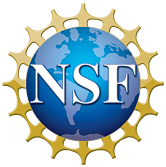ERA5.1: Corrections to ERA5 Stratospheric Temperature 2000-2006
To Access Resource:
Questions? Email Resource Support Contact:
-
datahelp@ucar.edu
Temporal Range
-
Begin: 2000-01-01T0000+00 End: 2006-12-31T2300+00
| Resource Type | dataset |
|---|---|
| Temporal Range Begin | 2000-01-01T0000+00 |
| Temporal Range End | 2006-12-31T2300+00 |
| Temporal Resolution | N/A |
| Bounding Box North Lat | 90.0 |
| Bounding Box South Lat | -90.0 |
| Bounding Box West Long | -180.0 |
| Bounding Box East Long | 180.0 |
| Spatial Representation |
grid |
| Spatial Resolution |
0.25 degree |
| Related Links |
Related Resource #1 : ERA5 |
| Additional Information | N/A |
| Resource Format |
WMO GRIB1 NetCDF4 |
| Standardized Resource Format |
NetCDF GRIB |
| Asset Size |
175537470.498 MB |
| Legal Constraints |
Creative Commons Attribution 4.0 International License |
| Access Constraints |
None |
| Software Implementation Language | N/A |
| Resource Support Name | N/A |
|---|---|
| Resource Support Email | datahelp@ucar.edu |
| Resource Support Organization | N/A |
| Distributor |
NSF NCAR Geoscience Data Exchange |
| Metadata Contact Name | N/A |
| Metadata Contact Email | datahelp@ucar.edu |
| Metadata Contact Organization | NSF NCAR Geoscience Data Exchange |
| Author |
European Centre for Medium-Range Weather Forecasts |
|---|---|
| Publisher |
NSF National Center for Atmospheric Research |
| Publication Date | 2020-06-12 |
| Digital Object Identifier (DOI) | https://doi.org/10.5065/CBTN-V814 |
| Alternate Identifier |
d633002 |
| Resource Version | N/A |
| Topic Category |
climatologyMeteorologyAtmosphere |
| Progress | completed |
| Metadata Date | 2025-10-09T01:28:17Z |
| Metadata Record Identifier | edu.ucar.gdex::d633002 |
| Metadata Language | eng; USA |
| Suggested Citation | European Centre for Medium-Range Weather Forecasts. (2020). ERA5.1: Corrections to ERA5 Stratospheric Temperature 2000-2006. NSF National Center for Atmospheric Research. https://doi.org/10.5065/CBTN-V814. Accessed 12 October 2025. |
Harvest Source
- ISO-19139 ISO-19139 Metadata

